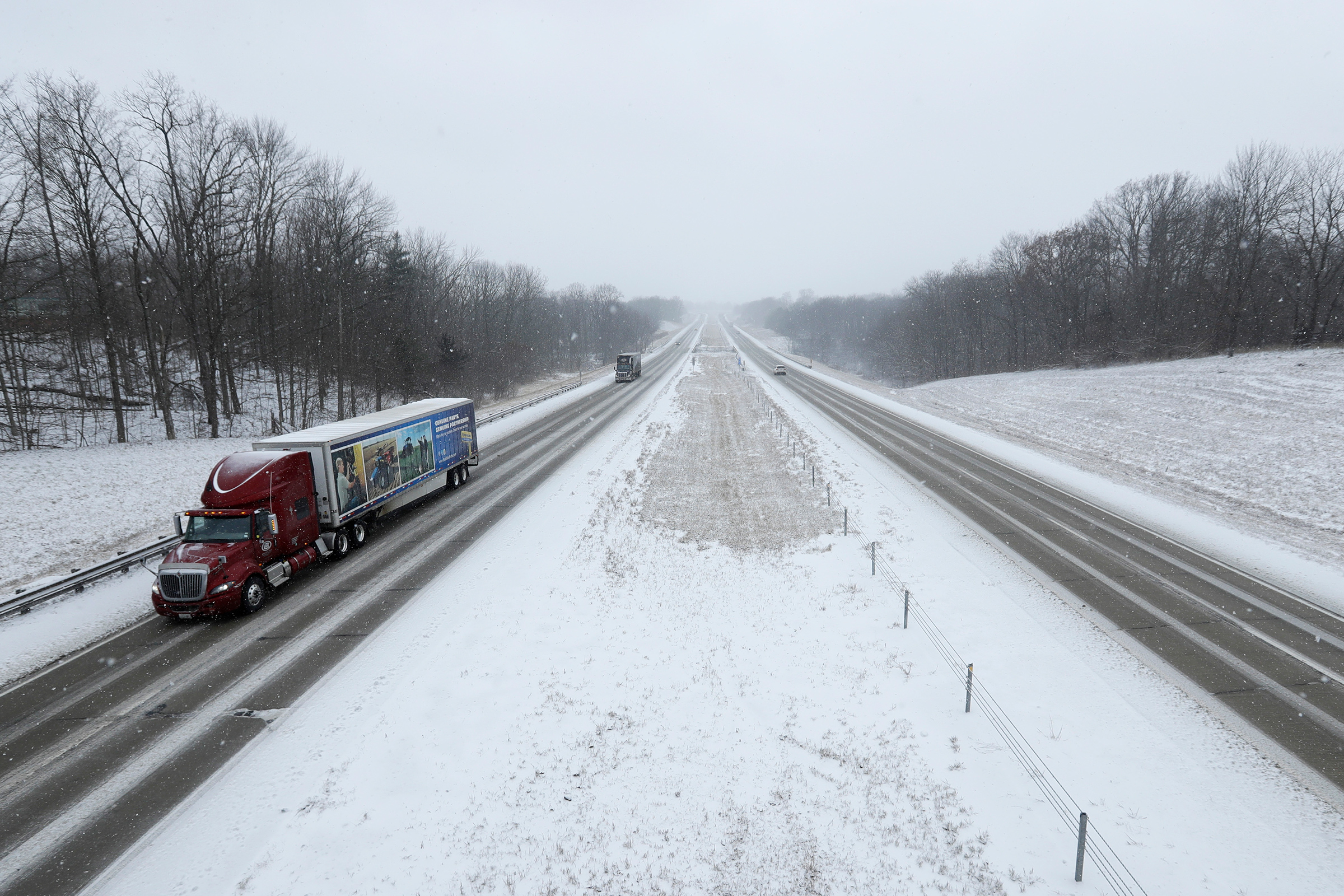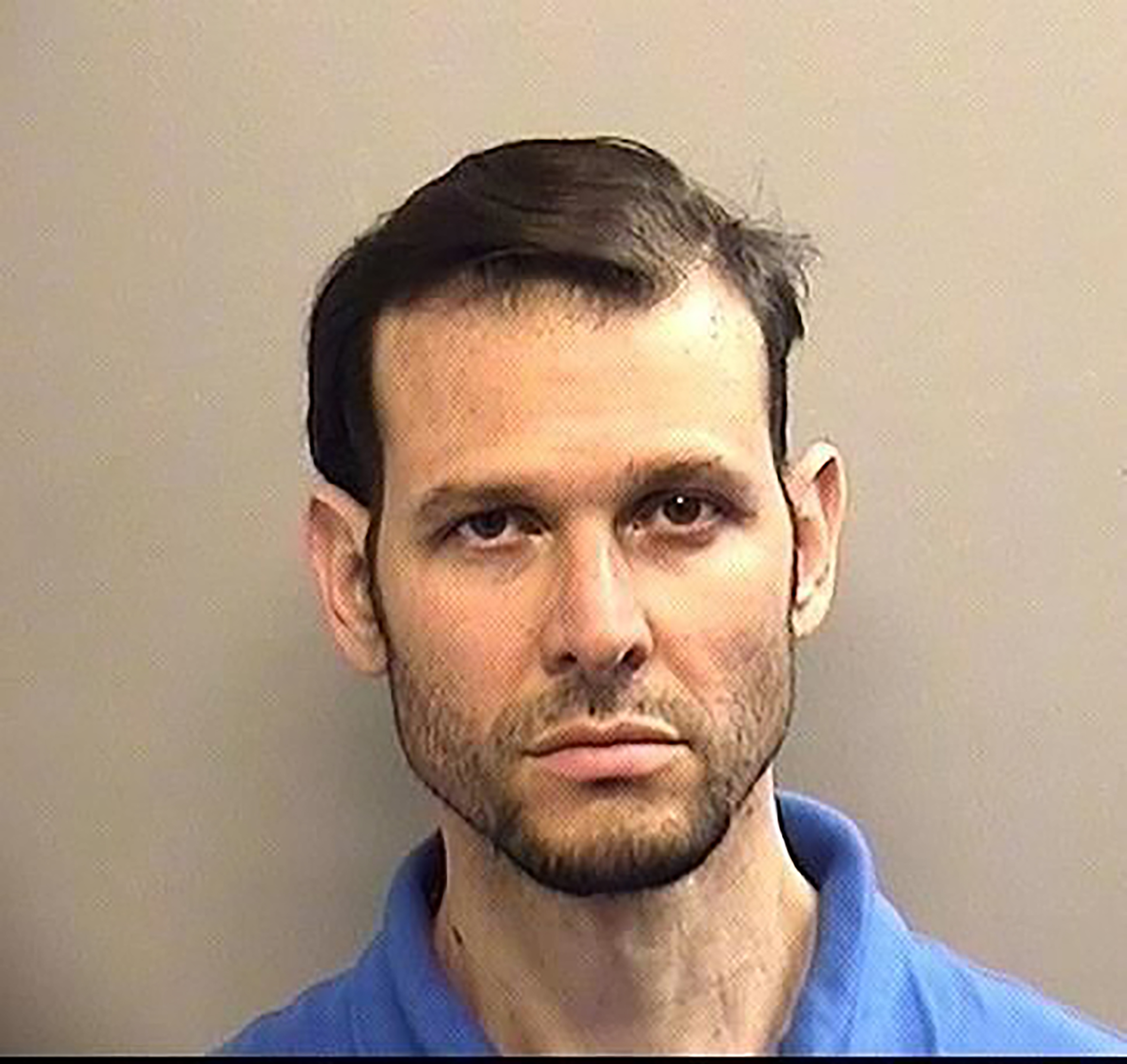
A truck driver whose body was found by cleaning crews along I-65 in Indiana, allegedly murdered by his co-driver, was working for CRST, an Iowa-based national trucking company with a history of labor complaints, the Indiana State Police have confirmed.
Aristedes Garcia, 63, had been bound for Cedar Rapids, Iowa, the home base of CRST, alongside a co-driver, Miguel Ibarguren. When his family reported him missing, police launched a multi-state homicide investigation that ended March 15 when they arrested Ibarguren in Texas.
The death of Garcia, who had driven for CRST for almost a decade, underscores the danger and horrible conditions many people who drive freight across the country experience every day. The trucking industry has been fraught with rapid turnover and worker shortages recently, and the alleged murder comes as the Biden administration tries to get more people into trucking to alleviate supply-chain issues. In December, it announced a plan to create apprenticeships to train more drivers, including 18- to 20-year-olds. CRST was one of the six companies that the White House announced would be creating registered apprenticeships through its Apprenticeship Accelerator program.
Read More: The Truck Driver Shortage Doesn’t Exist. Saying There Is One Makes Conditions Worse for Drivers
It is not known if Ibarguren or Garcia were part of this program, but CRST has long had a reputation as one of the more unpleasant places to learn to be a truck driver. Like many other long distance freight haulers, it offers to pay for drivers’ commercial license training if they commit to working for CRST for 10 months. In those 10 months, new drivers are partnered with slightly more experienced drivers and haul freight across the country; one sleeps in a berth while the other drives. This practice is called team driving, and enables companies to move freight more cheaply and quickly than with a solo driver who would have to stop to sleep.
But having two strangers share a small cab and sleeping berth can create problems. New drivers don’t get much sleep because it can be difficult to sleep while the truck is moving over bumpy roads. Tensions arise between team drivers because there is often a trainer and a student who needs the trainer’s approval to move on to the next stage of training. In 2018 and 2019, there were 150 to 200 sexual harassment claims involving CRST drivers, according to a 2020 deposition of Brooke Willey, vice president of human resources at CRST. One woman said that she was raped by her trainer, and told that without corroborating evidence like a video, the company could not do anything. She said CRST then billed her $9,000 for training; the case was settled for $5 million last year.
Aristedes Garcia was an easygoing person who didn’t get into conflicts easily, says David Boyd, a truck driver who trained under Garcia in December of 2019. Boyd says that training with CRST could be miserable; one of his other co-drivers accused Boyd of purposefully driving on a bumpy part of the road and wanted to get out and fight, Boyd says. Another constantly smoked, which was rough for Boyd, a non-smoker. But Garcia “was easygoing—I don’t think we argued or anything,” Boyd says.
Boyd had gotten his commercial driver’s license without ever having driven on an interstate—except for his test—and without really knowing how to back up. Garcia taught him how to do both. The two spent Christmas of 2019 on the road, and traveled across 46 states. Garcia trained Boyd for about a month, after which time Garcia was paired with different co-drivers who weren’t specifically teachers.
Read More: There’s a Problem With How We Train Truckers
Boyd says Garcia had frequently talked about quitting CRST. Boyd thought of quitting, too, when another co-driver threatened him, but says he would have owed the company $5,000 to compensate them for the cost of his training. One lawsuit found that only 20% of the 25,796 drivers who started training with CRST between November 2013 to March 2017 finished their team driving training, which would allow them to haul freight independently. Once Boyd finished the 10 months of training, he found a job for another company and now drives solo.
The alleged murder comes amidst numerous legal actions against CRST, some of which have been settled and some of which are ongoing. The company has been accused of paying drivers below the minimum wage, as well as looking the other way when rape and sexual assault occurred.
CRST did not respond to a request for comment.
According to the 2020 deposition from one of Weatherford’s cases, a CRST human resources employee had recommended that the company put cameras on the inside of CRST trucks. But “cameras in trucks present an interesting dilemma from a privacy perspective,” Willey, the vice president of human resources, said at the time.
The White House says that apprenticeships should help improve conditions in truck training. Registered apprenticeships provide certain standards and protections; CRST developed an apprenticeship program that met the legal requirements, and it was approved, according to an administration official.
But the death of Garcia has prompted more calls from industry advocates to hold companies accountable for incidents that happen while they’re training drivers—and making money.

“It’s time consumers and retailers know who they are supporting in the domestic supply chain,” says Desiree Wood, the founder and president of REAL Women in Trucking, which advocates for better standards for drivers. Many moving companies and retailers contract with CRST to get freight from one place to another.
“CRST should have their training program suspended until there is a thorough investigation of the problems in their business model of team driving during training,” she says.
New truck drivers are most frequently employed by CRST and other big carriers that are self-insured. Small companies that do not have their own insurance often have a hard time finding someone to insure new drivers, who pose a bigger risk to the company.
Even without the apprenticeships, CRST and many other trucking companies receive funding from the government. Students get workforce training grants to pay for truck driving schools, moving the costs of tuition from the company to the government. Then they start training, but frequently drop out because of the poor conditions, meaning government money has essentially subsidized their low-cost operations. CRST and other companies “have figured out how to make that inexperienced, unsafe labor profitable,” Steve Viscelli, a sociologist and the author of The Big Rig: Trucking and the Decline of the American Dream, told TIME last year.
More Must-Reads From TIME
- The 100 Most Influential People of 2024
- The Revolution of Yulia Navalnaya
- 6 Compliments That Land Every Time
- What's the Deal With the Bitcoin Halving?
- If You're Dating Right Now , You're Brave: Column
- The AI That Could Heal a Divided Internet
- Fallout Is a Brilliant Model for the Future of Video Game Adaptations
- Want Weekly Recs on What to Watch, Read, and More? Sign Up for Worth Your Time
Contact us at letters@time.com